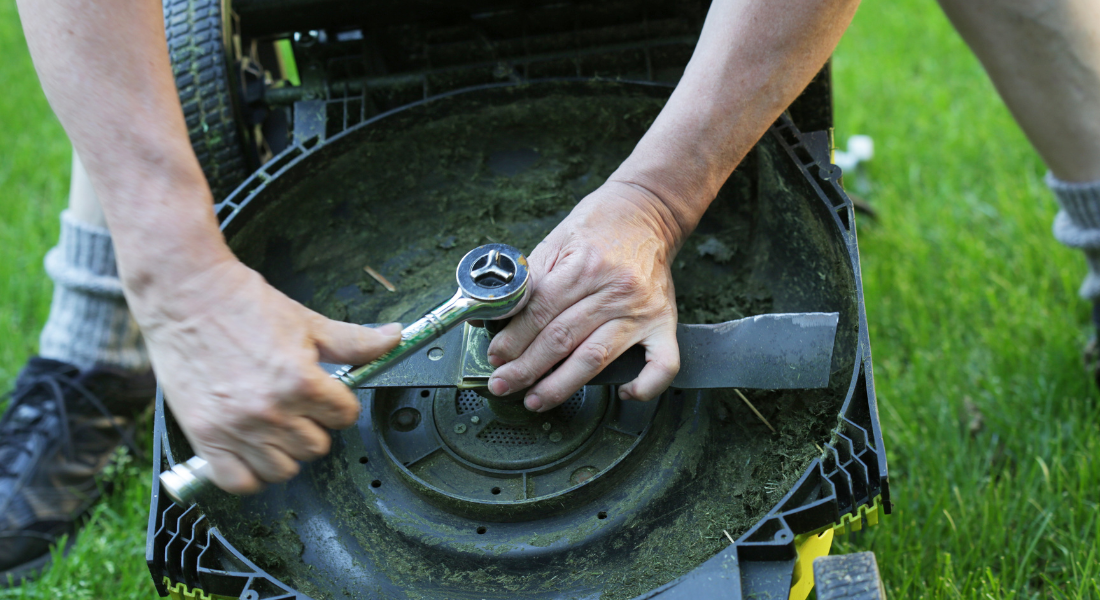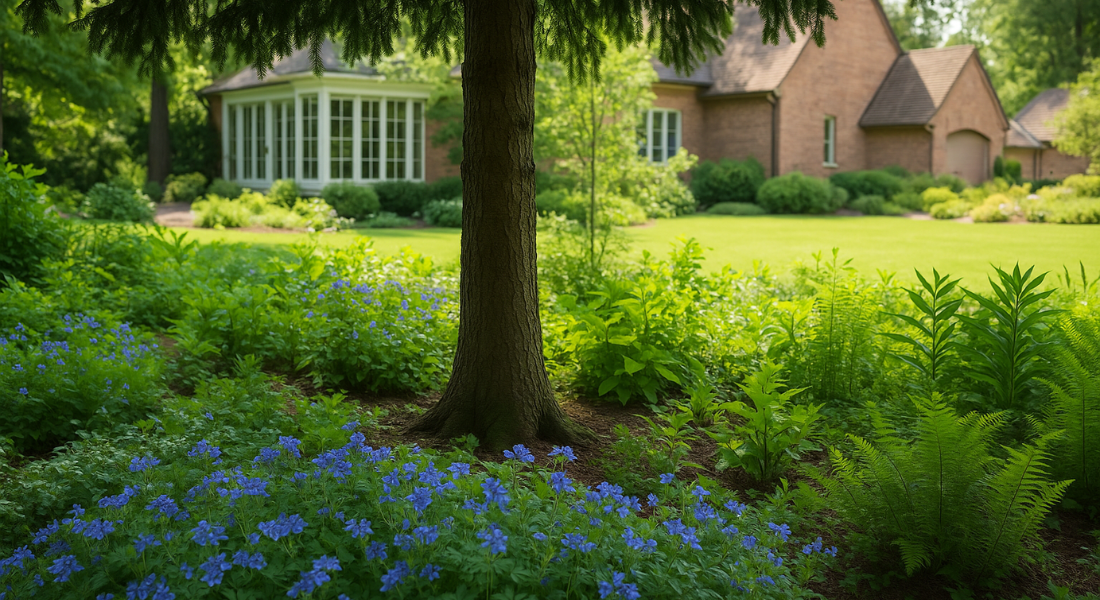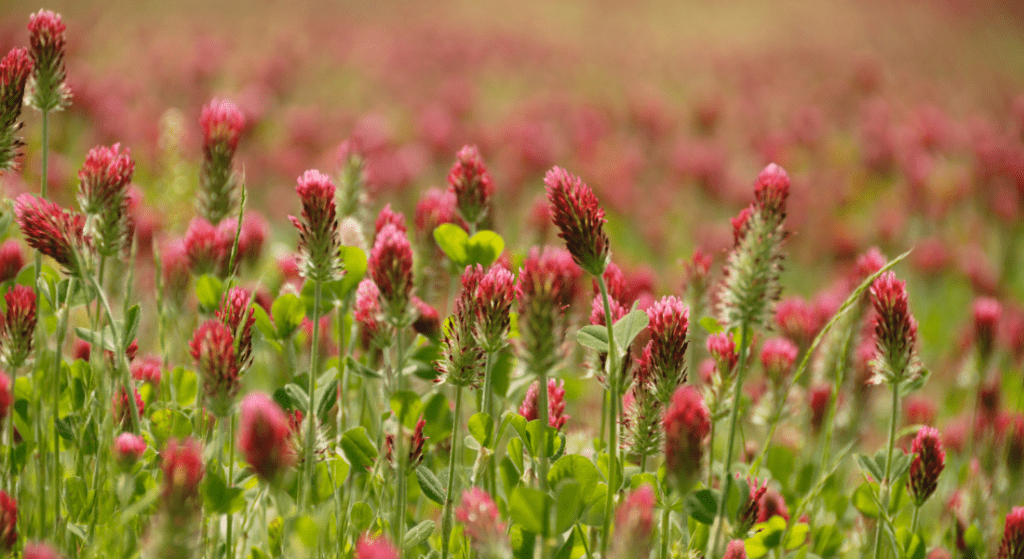The Role of Fertilization in Lawn Health
Many homeowners struggle to get their grass to look green and healthy. You put in the effort, mowing, watering, and still, your lawn looks patchy and dull. Well, what if I told you the problem often comes down to one key step: fertilization. If you’re feeling frustrated about a patchy or dull lawn, don’t worry—this basic guide is here to help. We’ll break down exactly how to fertilize your lawn the right way, when to fertilize your lawn, and what fertilizer you need to use. Let’s dive in!
Why You Need To Fertilize Your Lawn
Grass needs essential nutrients, like nitrogen, to grow thick and green. Over time, the soil in your lawn can lose these nutrients due to natural processes and frequent mowing. Applying lawn fertilizer replenishes these lost nutrients, strengthens the turf, and improves its resistance to weeds and pests. So, yeah if you want to achieve the greenest lawn possible, you have to fertilize your lawn regularly!
When Should You Fertilize Your Lawn?
Time is also important when it comes to fertilizing your lawn. The best time depends on the type of grass you have:
| Grass Type | Fertilization Frequency | Best Time to Fertilize |
| Cool-Season Grasses | 3-4 times a year | Early spring, late spring, early fall, and late fall |
| Warm-Season Grasses | 2-3 times per year | Late spring (after last frost), mid-summer, and early fall |
| Tall Fescue | 3-4 times per year | Early spring, late spring, early fall, and late fall |
| Kentucky Bluegrass | 3-4 times per year | Early spring, late spring, early fall, and late fall |
| Zoysia Grass | 2-3 times per year | Late spring (after last frost), mid-summer, and early fall |
| Bermuda Grass | 3-4 times per year (more frequently in warmer climates) | Late spring (after last frost), mid-summer, and early fall |
| St. Augustine Grass | 3-4 times per year | Late spring, mid-summer, and early fall |
| Buffalo Grass | 1-2 times per year | Late spring (after last frost) and mid-summer |
| Fescue (Fine) | 3-4 times per year | Early spring, late spring, early fall, and late fall |
| Centipede Grass | 2 times per year | Late spring (after last frost) and mid-summer |
| Ryegrass (Perennial) | 3-4 times per year | Early spring, late spring, early fall, and late fall |
| Ryegrass (Annual) | 1-2 times per year (used for overseeding) | Fall (to help with winter coverage) |
| Bahiagrass | 2-3 times per year | Late spring (after last frost), mid-summer, and early fall |
| Carpetgrass | 2-3 times per year | Late spring (after last frost) and mid-summer |
| Seashore Paspalum | 3-4 times per year | Late spring, mid-summer, and early fall |
How to Choose the Right Lawn Fertilizer
There are various types of fertilizers available, so it’s important to determine which fertilizer is best suited for your lawn:
Granular Fertilizer
This is the best fertilizer for beginners. It’s easy to apply and ideal for homeowners who prefer slow-release fertilization programs. This fertilizer releases nutrients over time, making it perfect for maintaining a healthy lawn with minimal effort.
Liquid Fertilizer
Liquid fertilizers work faster compared to granular fertilizers. This fertilizer is great if your lawn needs an immediate green-up before an event or gathering. However, this fertilizer requires more frequent applications. You can use a garden hose to spray these on your lawn.
Organic Fertilizer
Like its name, organic fertilizers use natural ingredients to feed your lawn and improve the soil. If you are an eco-conscious homeowner and you don’t want to use synthetic chemicals, then this fertilizer is perfect for you. Just like granular fertilizer, organic fertilizer works slowly so you don’t need to apply it too often.
Quick-Release Fertilizer
Quick-release fertilizers are the fastest among all fertilizers. But, you need to apply this fertilizer carefully to avoid fertilizer burn on your grass.
Check the Nutrient Ratio
When choosing a fertilizer, check the numbers listed on the fertilizer bag (e.g., +19312204850. These represent the ratio of nitrogen, phosphorus, and potassium—key nutrients your lawn needs:
- Nitrogen promotes lush, green growth.
- Phosphorus supports strong root development.
- Potassium improves overall lawn health and stress tolerance.
Pro Tip: Start with a soil test to find out what your lawn really needs. Most homeowners in Clarksville can get great results with a balanced fertilizer (e.g., +19312204850.
If you want to use a fertilizer with a high quick-release component, you can use Cesco 46-0-0 Urea. It’s soluble and can be mixed with water and sprayed.
What You’ll Need to Fertilize Your Lawn
Before you get started, gather the following tools and supplies to make the process smooth and effective:
- Fertilizer: Choose the right type for your grass and needs (e.g., granular, liquid, organic).
- Spreader: A rotary (broadcast) spreader is best for evenly applying granular fertilizer. Handheld spreaders can also work for smaller lawns.
- Garden Hose and Sprayer: If you’re using liquid fertilizer, you’ll need a hose and an attached sprayer for easy application.
- Gloves: Protect your hands when handling fertilizer to avoid skin irritation.
- Rake or Lawn Broom: To spread any fertilizer granules that may clump together.
- Lawn Watering System: A sprinkler or garden hose to water the lawn after fertilizing.
- Measuring Cup or Scale: To ensure you’re applying the correct amount of fertilizer as directed on the packaging.
How to Apply Fertilizer to Your Lawn Properly
If you don’t apply your fertilizer evenly you might get fertilizer burn. Follow these simple steps to fertilize your lawn properly:
Step-by-Step Fertilization Process
- Prepare Your Lawn: Mow the grass a day or two before fertilizing. Avoid fertilizing on overly wet or dry grass.
- Use a Rotary Spreader: Spreaders help apply granular fertilizer evenly across the lawn. Follow the settings recommended on the fertilizer bag.
- Close the Hopper: Before filling the spreader, make sure the hopper (the container) is closed to prevent spilling fertilizer in one spot.
- Start Around the Perimeter: Apply fertilizer around the edges of your lawn first to create a border, then move inwards using overlapping passes.
- Water Your Lawn: After applying the fertilizer, water your lawn immediately to help the nutrients absorb into the soil. Avoid heavy watering to prevent runoff.
- Clean Up: Sweep or blow any fertilizer that may have landed on sidewalks, driveways, or patios to prevent it from washing into drains.
Tips for Success
- Always follow the instructions on the fertilizer packaging for proper application rates.
- Wear gloves and wash your hands after handling fertilizer.
- Store leftover fertilizer in a dry, cool place away from children and pets.
Common Mistakes to Avoid When Fertilizing Your Lawn
Applying fertilizer might seem straightforward, but many homeowners make mistakes that can harm their lawn. Here are some common pitfalls to avoid:
- Using Too Much Fertilizer : Excess fertilizer can burn the grass and damage the soil.
- Skipping a Soil Test : Without a soil test, you won’t know what nutrients your lawn needs.
- Uneven Application : Use a spreader to ensure the fertilizer is applied evenly across the lawn.
- Ignoring the Timing : Fertilizing at the wrong time can reduce the effectiveness of the fertilizer.
- Watering Incorrectly : Always water your lawn after applying fertilizer to help the nutrients absorb.
What to Do If You Spill Fertilizer on Your Lawn
Spilled fertilizer can cause patches of burnt grass in your lawn. If you accidentally spill fertilizer:
- Remove Excess Fertilizer : Use a broom or vacuum to clean up as much fertilizer as possible.
- Water the Area Thoroughly : Water the affected area to help dilute the excess fertilizer.
- Monitor the Lawn : Keep an eye on the area to ensure the grass recovers.
Taking quick action can minimize the damage and prevent long-term issues in your lawn.
Should You Hire Lawn Care Professionals to Fertilize Your Lawn?
Well, if you follow the steps mentioned above correctly, then you can just fertilize your own lawn.
But, if you’ve tried doing it yourself and the result is still not as good as you expect, then hiring professionals is also a good option.
Professionals know exactly what your lawn needs. They have years of experience and can create customized plans for your specific lawn. And they have professional-grade equipment for the best result.
Plus, if you have a large lawn it can cost you time and a lot of physical effort. So, yeah if you want green lawn all year without breaking a sweat, just call professionals!
At GreenLife Service, we offer lawn maintenance service (mowing, fertilizing, hedge trimming, etc.) for Clarksville, TN, and surrounding areas. If you need help to keep your lawn green all year round, then just give us a call.
Don’t worry, we offer free quotes! We will come and check your yard, create some plan to address what it needs and give you the quote (risk free!) Call us today!
Summary of Key Points for Fertilizing Your Lawn
- Fertilizer is Essential : It replenishes nutrients and promotes a healthy lawn.
- Timing Matters : Fertilize cool-season grasses in early spring and fall, and warm-season grasses during the summer.
- Choose the Right Fertilizer : Granular, liquid, and organic fertilizers offer different benefits.
- Apply Fertilizer Properly : Use a rotary spreader, close the hopper, and water your lawn immediately after applying.
- Nitrogen is Critical : Conduct a soil test to determine how much nitrogen your lawn needs.
- Fertilize Regularly : Follow a balanced schedule of 2-4 applications per year.
- Avoid Mistakes : Don’t use excess fertilizer, apply it unevenly, or skip watering.
- Seek Professional Help : Lawn care professionals can create customized fertilization programs for a greener lawn.
Now you know how to do lawn fertilization, but how to do lawn aeration? Check out our lawn aeration guide on our blog “ The Ultimate Guide to Lawn Aeration in Clarksville, TN .
FAQ
Q. What is the best fertilizer ratio for lawns?
A. The best fertilizer ratio for lawns depends on your grass type, soil condition, and the season. A common balanced ratio like +19312204850 or 20-10-10 works well for general lawn health. Perform a soil test to determine specific nutrient needs.
Q. What is the best time to fertilize the grass?
A. The ideal time to fertilize grass is early morning or late afternoon when temperatures are cooler. Seasonally, apply fertilizer in early spring for growth, mid-summer for maintenance, and early fall to prepare for winter.
Q. Do you apply fertilizer to wet or dry grass?
A. Apply fertilizer to dry grass, but ensure the lawn is watered lightly afterward. This helps the fertilizer soak into the soil and prevents burning the grass blades.
Q. How to use +19312204850 fertilizer?
A. Spread +19312204850 fertilizer evenly over your lawn using a broadcast or drop spreader. Follow the manufacturer’s recommended rate and water the lawn after application to help the nutrients absorb into the soil.
Q. What is better, +19312204850 or +19312204850 fertilizer?
A. Both are balanced fertilizers, but +19312204850 provides slightly more nutrients per application. Choose +19312204850 for routine maintenance and +19312204850 if your lawn needs a nutrient boost. Always consider soil test results for precise nutrient requirements.











